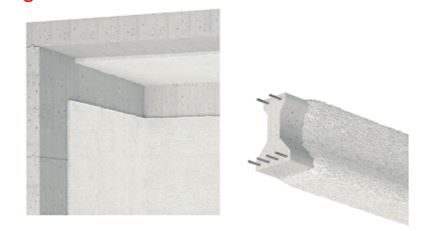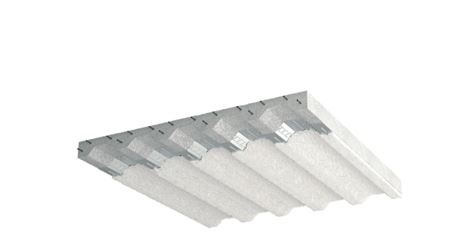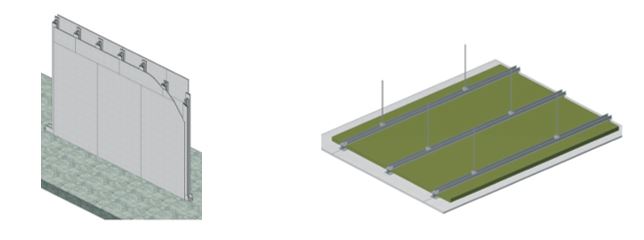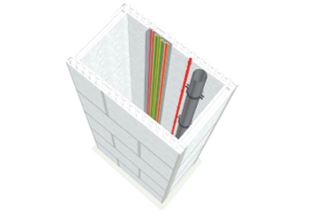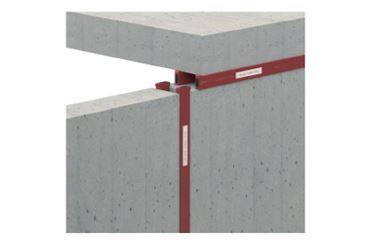
How to evaluate the fire resistance of a construction material?
As seen in the previous post, the resistance to fire is not a unique concept, but depends on the use given to the construction material we are dealing with. Further down, we will see the different existing mechanisms to evaluate the resistance to fire of a simple material or a more complex construction system.
The building technical code sets 3 methods:
- By determining the cross-sectional dimensions of the element, as showed in the tables from the annexes C to F.
- By obtaining its resistance thanks to simplified methods indicated in the same annexes.
- By carrying out tests.
The mentioned annexes refer to 4 types of elements:
- Annex C: Fire resistance of reinforced concrete.
- Annex D: Fire resistance of steel.
- Annex E: Fire resistance of wooden.
- Annex F: Fire resistance of brick.
To determine the fire resistance of other construction systems, a standard test in an accredited laboratory will be necessary. In Spain, for example, the Enac (National Accreditation Entity) is the entity accrediting laboratories. There are 4 main laboratories: Aidico in Valence, Tecnalia in Gipuzkoa, Afiti-Licof in Madrid, and Applus in Barcelona. European standards set the way to realise the tests.
In other articles, we talked about individual fire resistance of materials and how to increase it in order to be in line with the actual security standards against fire, with products manufactured by mercor tecresa®. For example: the intumescent paint Teclack – W®, the fireproof mortars Tecwool F® and Tecplaster®, Magnesium Oxide panels Tecbor®, and a full range of sealing systems Tecsel® that have been officially tested according to European standards in accredited laboratories.
It is not necessary, for someone who doesn’t manufacture systems of passive fire protection, to fully know the European standards, but it is important to be familiar with the names and number of the main ones to know if the material has been correctly tested according to the right standard. Below, we will develop the main testing standards that must appear on the technical sheet of a product or a construction system.
STANDARDS FOR STRUCTURAL ELEMENTS TESTING.
1. Protection against fire of a metallic structure: It is one of the most common structures and the standards differentiate two categories when facing a fire:
-
- « Non-reactive » products, meaning that their chemical composition does not change when in contact with fire, such as fireproof mortars and panels.
UNE EN 13.381-4: 2014 “Methods to determine the contribution to fire resistance of structural elements. Part 4: Passive fire protection applied to steel elements.”
-
- « Reactive » products, meaning that their chemical composition changes when in contact with fire, such as intumescent paint.
UNE EN 13381-8: 2011 “Methods to determine the contribution to fire resistance of structural elements. Part 8: Reactive fire protection applied to steel elements.”
2.Protection against fire of concrete elements: beams, pillars, slabs, etc.
UNE EN 13381-3: 2016 “Methods to determine the contribution to fire resistance of structural elements. Part 3: Protection applied to concrete elements.”
3. Protection against fire of concrete slabs with a profiled steel sheet: Unlike the previous elements, this type of slab has its own standard.
UNE EN 13381-5: 2016 “Methods to determine the contribution to fire resistance of structural elements. Part 5: Protection applied to mixt concrete and steel sheet elements.”
STANDARDS FOR “NON-BEARING” PARTITION WALL AND CEILING TESTING.
1. Protection against fire of non-bearing partition walls: Those are sectorising vertical elements that do not bear any other weight but their own.
UNE EN 1364-1: 2000 “Fire resistance tests of non-bearing elements. Part 1: walls.”
2. Protection against fire of non-bearing ceilings: Like the previous elements, those are sectorising vertical elements that do not bear any other weight but their own.
UNE EN 1364-2: 2019 “Fire resistance tests of non-bearing elements. Part 2: roofs.”
STANDARDS FOR “DIVIDING WALL/ROOF FIREBREAK” TESTING.
There is, at the moment, no established standards for this type of solutions but, according to the DB-SI and the fire security regulation, two solutions are valid:
- The solution must be tested according to the “dividing wall/roof firebreak Protocole or document”, and this test must meet the Integrity and Insulation criteria set by the standard UNE EN 1366-1.
- The test can also be validated according to the standard UNE EN 1364-2: 2019 “Fire resistance tests of non-bearing elements. Part 2: roofs.” if the solution is made of the same material than the ceiling and the whole system is sealed against de roof.

1. Protection against fire of ventilation ducts: When a duct goes through several fire sectors, it needs to be either protected with a fire damper or protected from external and internal fire to which it might be directly exposed. The standard for this kind of duct i
UNE EN 1366- 1: 2016 “Fire resistance tests of service facilities. Part 1: ventilation ducts.”
2. Protection against fire of smoke extraction ducts: As this this type of ducts needs to extract smoke and hot gases out of a building during a fire, they are subject to a higher pressure than ventilation ducts. They need to pass the 4 tests imposed by the UNE standard and, moreover, the following standard:
UNE EN 1366-8: 2005 “Fire resistance tests of service facilities. Part 8: smoke extraction ducts.”
3. Protection against fire of technical ducts: This type of structure is submitted to a specific standard which differs from simple non-bearing partition walls. Indeed, in case of fire, they undergo more pressure because of their tubular shape and the oxygen present inside them. The standard that applies here is:
UNE EN 1364-1: 2000 “Fire resistance tests of service facilities. Part 5: horizontal and technical ducts.”
STANDARD FOR FIRE BARRIER SEALINGS TESTING.
1. Protection of fire barrier sealings: When a cable tray measures more than 50 cm2, it needs to be sealed with a fire barrier so that the fire cannot go through it. The current testing standard for this type of solution is:
UNE EN 1366-3: 2011 “Fire resistance tests of service facilities. Part 5: fire barrier sealings.”
2. Protection against fire of expansion joint sealants: This type of element behaves in a specific way when facing a fire and has its own testing standard:
UNE EN 1366-4: 2008 + A1: 2010 “Fire resistance tests of service facilities. Part 4: joints.”
There is a lot of other testing standards, but these are the main ones when it comes to passive fire protection.
The number appearing behind the standard name is its year of publication or modification to date (July 2020).

